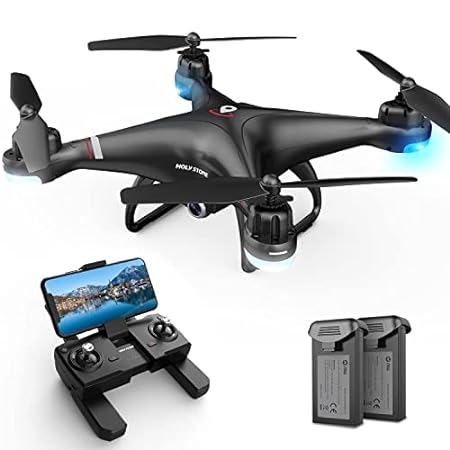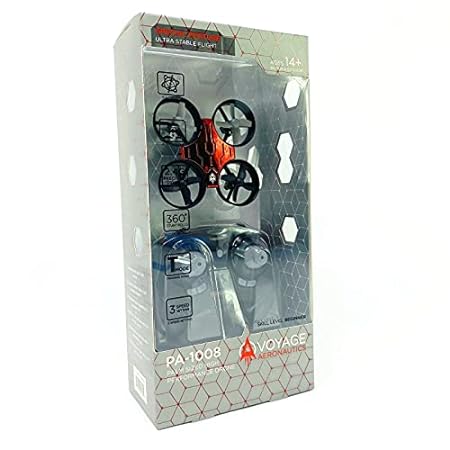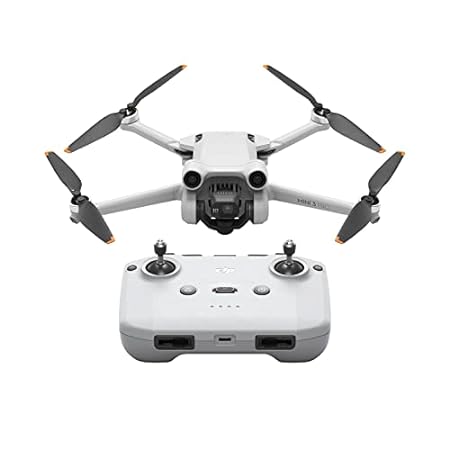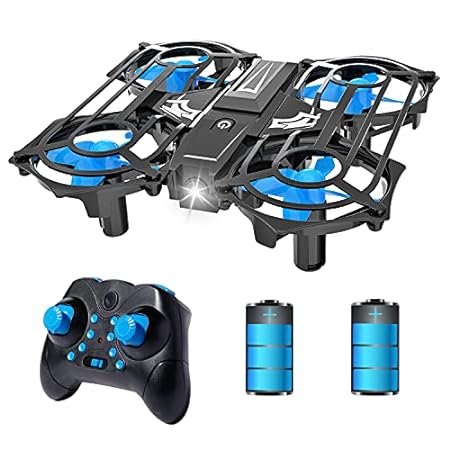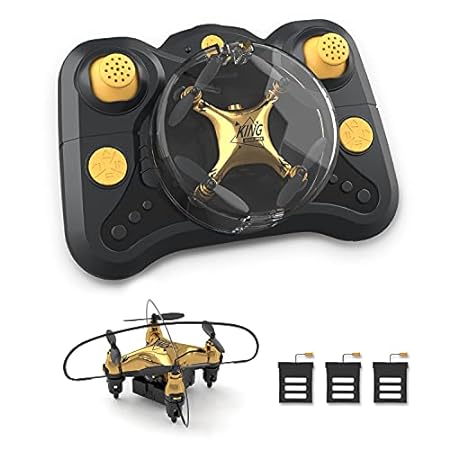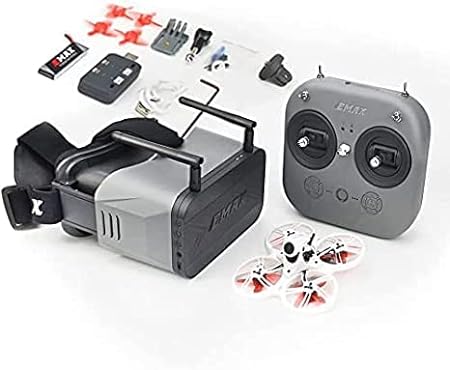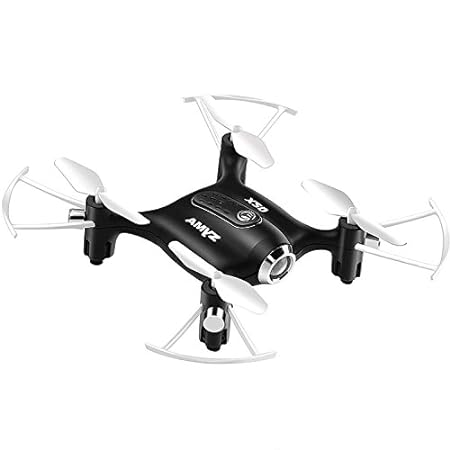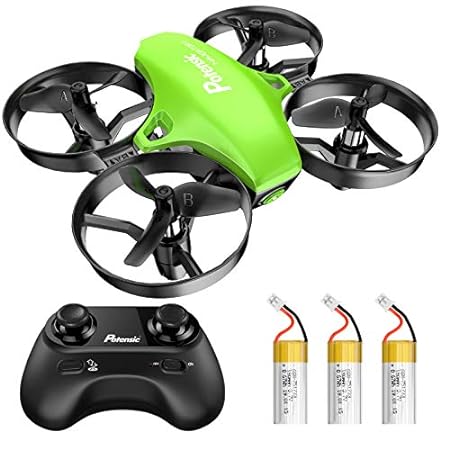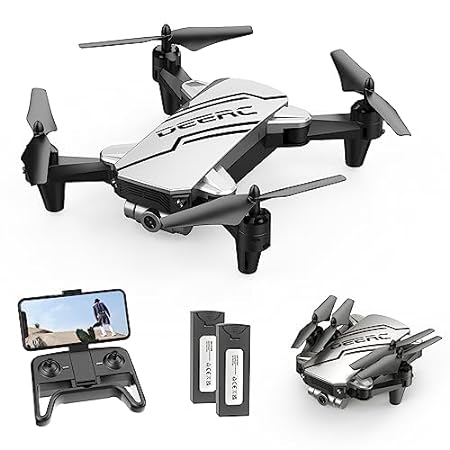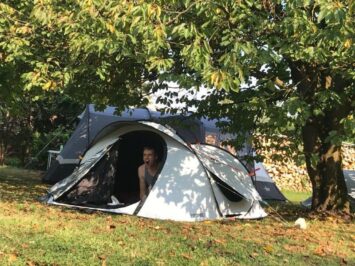Micro drones are smaller versions of the typical quadcopter. As drone technology advances, it also increases the need for drones to improve our everyday experiences. Thus, the best micro quadcopters are useful as learning tools to give you a piloting skill that will enable you to handle larger and more technical drones.
Micro drones have a simple mechanical design that makes them easier to control than regular quadcopters. They are also cheaper, which makes them attractive for newbies to learn with them.
On the other hand, they have fewer features to make them useful for everyday applications such as aerial photography, and they are mostly for playing with them. It also constricts you to flying indoors, so you may not get the experience needed for outdoor flying. However, you can get the best drone for under $200 to practice outdoor flying affordably.
As a beginner quadcopter pilot, there is no better way to learn flying than with a micro drone. They have a quick learning curve, and with a less expensive construction, you can afford to crash it a few times and graduate to flying the regular drones in no time.
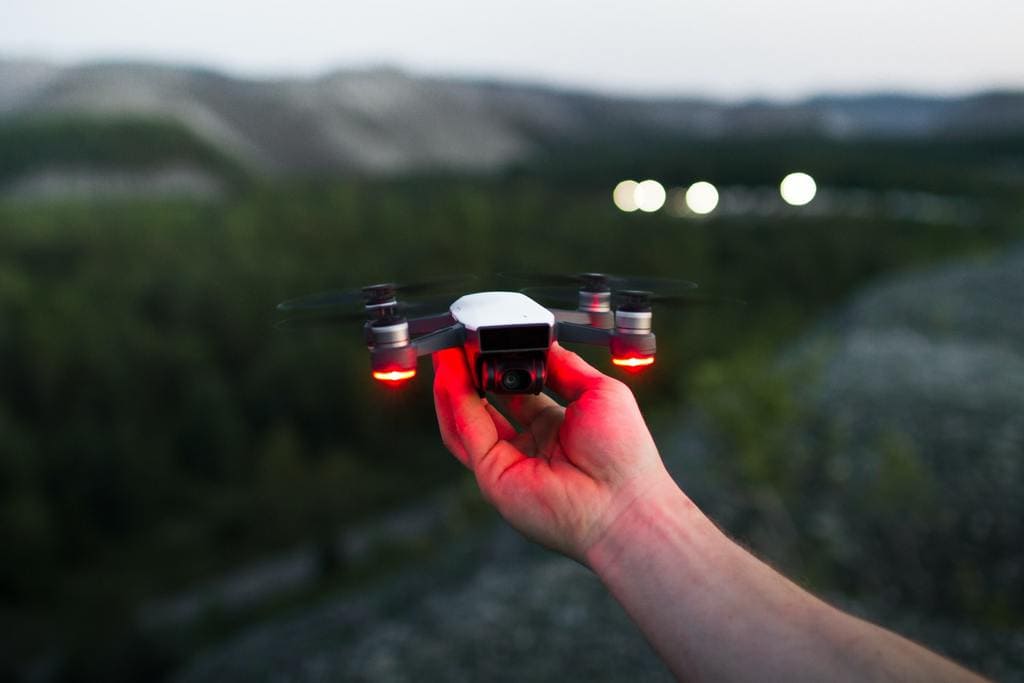
Quick Navigation
ToggleWhat is the Best Micro Drone?
We have compiled for you the top 9 Best Micro Drone in 2024. In this article we go through the products that we have used ourselves, checked what other users thought about them and we ranked them accordingly.
With years of experience with mini drones and having used several micro drones you can trust our review.
Moreover, you can scroll to the end of this review to see our mini buying guide as well as the answers to some of the frequently asked questions about micro drones.
1. Holy Stone HS110G FPV Drone
| Specs |
|---|
| Price: 💲💲💲 (fewer 💲 = cheaper) Weight: 0.33 pounds (0.15 kg) Max Flight Time: 20 Minutes Control Range: 328 ft (100 m) Gimbal/ Stabilization: No SD Card Slot: Yes Charging Time: 3 Hours |
Want a reasonably priced drone with live video capabilities? Check out the Holy Stone HS110G – it is the best cheap drone with a camera. This quadcopter integrates incredible technology, letting you see where it’s soaring on the go, even with a tighter budget.
Undeniably, it doesn’t come equipped with stabilization. Despite this, it outperforms many stabilized drones that lack an SD Card Slot. The HS110G stores footage directly to an SD Card, preventing spotty videos and offering a smoother viewing experience.
The HS110G stands out for its user-friendly attributes. Novice fliers commend the intuitive remote controller and the beginner-friendly App, making it a breeze to hone drone-flying skills. Moreover, its durable and economical batteries offer a longer flight time, satiating your flying desires.
Note that the batteries require charging within the drone, this implies a pause in your airtime, a minor drawback to contemplate. If you cannot spare over a hundred dollars and still want to see where you’re flying in real time, then this model is for you.
While it doesn’t have stabilization, it may actually record a better quality footage than the quadcopters that do but lack SD Card Slot. Recording to SD Card ensures the videos aren’t spotty and make for a much better watching.
A lot of people sing praises of the remote controller and the App for this drone so if you’re new to flying quadcopters, you should have an easy time learning with this one.
One of the biggest advantages are the batteries that hold for long time and are cheap to get, so that you get more air time. However, to charge them, you won’t be able to fly, which is the biggest disadvantage.
Pros
- Impressive cost-efficiency,
- Brilliant video quality for newbie quadcopters,
- Durable and affordably priced batteries,
- User-friendly remote controller,
- Video recording options extend to an SD card or your phone,
- Robust and beginner-accommodating App
Cons
- Struggles to hold position outdoors in strong winds,
- Requires in-drone battery charging, resulting in suspended flight time
2. DJI Mini 3 Pro
| Specs |
|---|
| Price: 💲💲💲💲 (fewer 💲 = cheaper) Max Flight Time: 34 Minutes Control Range: 18 Km Gimbal/ Stabilization: 3-axis SD Card Slot: Micro SD Charging Time: 1 Hours |

With advancements to capture the eye of professional content creators, the DJI Mini 3 Pro paves the way for next-level aerial photography. While priced marginally higher than its predecessor, the Mini 2, the improvements to this handy drone are quite notable.
Under the hood of the Mini 3 Pro resides an upgraded 1/1.3” CMOS sensor sealed with dual-axis stabilization. This standout feature makes all the difference, allowing you to go beyond the conventional, unleashing 48MP photography with stunning clarity. Whether you’re into landscape or portrait, the camera’s versatile 90-degree rotating angle lets you capture perfect aerial stills. These high-quality verticals are bound to amplify the aesthetics of your Instagram and TikTok feeds, asserting your unique digital footprint.
The Mini 3 Pro’s runtime is also quite impressive, promising up to 34 minutes on a single charge. For those extended creative sessions, you can consider buying the Intelligent Flight Battery to expand its flying time. However, please note that this extra battery will tip the drone’s weight just over 250g.
In summary, the DJI Mini 3 Pro, despite its higher price tag, is an excellent choice for dedicated content creators seeking excellent image quality, versatility, and enhanced performance.
Pros
- Sensor with dual-axis stabilization,
- Captures amazing low-light shots,
- Records at 60fps in 4K, Compact yet powerful
Cons
- Higher price than the Mini 2,
- Only a modest improvement in runtime
3. Voyage Aeronautics PA-1008 Micro Drone
| Specs |
|---|
| Price: 💲 (fewer 💲 = cheaper) Max Flight Time: 5 Minutes Control Range: 60 meters Charging Time: 0.67 Hours |
PA-1008 is a toy for tech-savvy kids. With a futuristic look, it incorporates headless and auto-hover modes. Air pressure sensors help it stay locked in a position. A built-in gyroscope makes the flight stable for brisk outdoor trips. Fly it within an unobstructed 50-meter radius. Bumps tend to disconnect aircrews from the transmitter.
Unlike toggling between two speeds in typical drones, this one has three stages. It takes a non-standard alkaline cell. Juice it up from a computer. Don’t force the cord down the port. And remove it once the red light starts flashing. It’ll fly for about five minutes per charge.
Pros
- Altitude hold,
- 6-axis gyro chip,
- One key start/land,
- Three-speed settings
Cons
- Controller gets out of sync,
- Short flight time
4. NEHEME NH320 Mini Drone
| Specs |
|---|
| Price: 💲 (fewer 💲 = cheaper) Weight: 0.06 pounds (0.03 kg) Size: 3.7 x 3.5 x 0.8 inches (9.4 x 8.9 x 2 cm) Max Flight Time: 7 Minutes |
Although Neheme is not a well-known brand, they have made a fantastic effort in producing affordable quadcopters for children and entry-level drone pilots. The NH320 is a scaled-down model compared to the more popular Neheme NH525, and it is also the budget choice drone on my list. It features a protective cage around the propellers that serves two functions. It protects your children from getting injured by the rotating propellers, and it also protects the propellers from getting damaged on impact. Although this is a fantastic design feature, it also makes it harder to clean out the dust bunnies collected in the propellers. The NH320 also comes with some fun features that are attractive to kids, such as the 360-degree tumbling action that users have noted is exciting. Another feature is the 3-speed mode that allows you to change speed according to your skill level and LED lights that make it fun to fly in the dark. On the upside, the remote controller is highly responsive and makes it a nice educational drone for newbies. It allows a one-key lift-off and landing sequence and altitude hold, both of which make it easy to fly. The drone comes with three batteries that may give you up to 21 minutes with a charging time of 90 minutes each. However, the battery compartment is a little tight and makes removing and replacing the batteries a tedious process for some people.
Pros
- Easy to fly with one-key takeoff/ landing,
- Highly responsive 360-degree tumbling action,
- Child-safe construction with full propeller guards,
- 3-Speed mode for different skill levels,
- Great value for your money
Cons
- Tedious battery removal and installation process
5. Holyton HT02 Golden Drone
| Specs |
|---|
| Price: 💲💲 (fewer 💲 = cheaper) Max Flight Time: 8 Minutes Control Range: 30 meters Charging Time: 0.5 Hours |
HT02, the golden nano drone, comes with three batteries and two charging cables. (Other colors are available.) Everything – except guards – fits inside a 2.4GHz controller for ease of storage and transit.
It has all the fundamental options, such as stunning 3D flips in the air. Three-speed modes allow newbie pilots to progress gradually. Headless orientation and hovering abilities make it easier. The emergency key enables instant take-off; pressing it again lands the aircraft.
This lightweight model is perfect for kids. Spare batteries beef up the runtime. However, it should be used in a 100ft enclosed area with propeller guards.
Pros
- Compact and convenient,
- Three modular batteries,
- 360⁰ aerial stunts,
- User-friendly headless mode
Cons
- Short transmission range,
- It’s unstable in small gusts
6. EMAX Tinyhawk RTF Micro Racing Drone
| Specs |
|---|
| Price: 💲💲💲💲 (fewer 💲 = cheaper) Weight: 0.93 pounds (0.42 kg) Size: 4.3 x 3.7 x 1.5 inches (10.9 x 9.4 x 3.8 cm) Max Flight Time: 4 Minutes Charging Time: 1 Hours |

The EMAX Tinyhawk RTF micro drone is the premium choice on my list. It is an excellent choice for entry-level quadcopter pilots, and it comes ready to fly out of the box. The drone comes with an FPV kit that includes FPV goggles, the remote controller, and a small carry case. Although the drone is slightly larger than some of the other drones on the list, it is considerably lightweight at 42g.
The drone features a durable polypropylene frame with impact protection guards for the propellers. It also includes an FPV camera which transmits high-quality FPV video to the goggles or an external monitor. Another thoughtful feature is the motor beeper function that helps you find the micro drone if it lands in a busy place.
Tinyhawk is a racing drone, and it has the fastest speed of all the drones on this list at 35 miles per hour. The quadcopter’s controller comes with Level, Horizon, and Full Acrobatic FPV flight modes. On the downside, its battery performance is the shortest on my list of the best micro-drones at four minutes.
Pros
- Ready to fly out of the box,
- Can achieve 35mph racing speed,
- Comes with a camera and FPV goggles,
- Sturdy and durable construction
Cons
- Short flight time of four minutes
7. SYMA X20 Mini Drone
| Specs |
|---|
| Price: 💲 (fewer 💲 = cheaper) Max Flight Time: 5 Minutes Control Range: 50 meters Charging Time: 0.83 Hours |

X20 is the most famous kid drone, and rightly so! Cheerwing currently puts up the lowest price tag on Amazon. However, several companies have rebranded it. Browse for the best deal.
It spans over 4”. It’s only a pastime toy as there is no camera. Still, it allows you to do multiple indoor and outdoor tasks. The controller moves it in all directions, allowing 360⁰ stunts and hovering. 6-axis gyro strengthens stability and wind resistance.
Four separately-sold AAA batteries are required. Gently plug the charging cord. And the only regret will be that it ends too quickly – the fastest five minutes spent!
Pros
- Compact size,
- 3D flips and movements,
- Altitude hold mode,
- One of the cheapest drone
Cons
- Batteries are not included,
- Fragile charging port
8. Potensic Upgraded A20 Mini Drone
| Specs |
|---|
| Price: 💲💲 (fewer 💲 = cheaper) Weight: 0.42 pounds (0.19 kg) Size: 3.5 x 3.1 x 1.3 inches (8.9 x 7.9 x 3.2 cm) Max Flight Time: 6 Minutes Charging Time: 1 Hours |
The A20 mini drone is another budget-friendly option in the same price range as the NH320 and H823H mini-quadcopters reviewed here. What makes the A20 slightly different is that it is made as a kid’s toy, although it is also an excellent beginner drone for adults. It also does not feature the 3D flip. The A20 remote controller is one of its most outstanding features. It is smaller than most for kids to hold and control easily. The controller features 2.4Ghz, which delivers a stable transmission speed and makes the drone highly responsive. It features a 3-Speed Mode to use in different environments, the headless mode, and altitude hold that make it easy for newbie pilots to fly. Many users have noted that the A20 delivers smooth flying. However, it also requires calibration every time you power it up, which was a nuisance. On the upside, the transmission performance of the controller makes the pairing an easy process. The landing process is equally simple, and interestingly, the drone features a soft landing material to protect it from heavy impact.
Another outstanding feature is the Emergency Stop that allows the quadcopter to land itself if you lose control. Although the drone features a headless mode that allows you to fly it in any orientation, it also comes with an LED headlight and a red tail light for the more experienced users.
Pros
- Short battery charging time of 30 minutes,
- Affordable and high-quality construction,
- Small-sized remote controller for kids hands,
- Lightweight and durable construction for indoor flying,
- Features a headlight and taillight for orientation
Cons
- It needs calibration every time you power it on,
- Difficult to remove and replace the batteries
9. DEERC D20 Mini Drone
| Specs |
|---|
| Price: 💲💲💲 (fewer 💲 = cheaper) Max Flight Time: 10 Minutes Control Range: 40 meters Charging Time: 1.33 Hours |

DEERC produces versatile RC toys for kids, and now they’ve added a drone! Anyone can buy it to get started, give a gift, or have simple fun. Integrating a 720p HD Wi-Fi camera at this low price point deserves a lot of credit. It channels a live video feed as well. However, the 40-meter space is too small. All snapshots will be saved in your smartphone gallery. It accepts voice inputs and certain gestures (V and palm) to click images or change direction. Its battery dies in about ten minutes, and there are two of them! Safety features are plenty: four propeller guards, low-battery signal, and emergency collision stop.
Pros
- Waypoints fly,
- Emergency stop,
- Two 5000mAh batteries,
- A cheap camera drone
Cons
- No SD card slot,
- Too short transmission distance
Verdict
To summarize, we have gone through dozens of micro drones and decided that 9 are worth your consideration. Out of these, the absolute Best Micro Drone is Holy Stone HS110G FPV Drone which we highly recommend as our overall best.
If money is not an issue, you can consider DJI Mini 3 Pro as this is our Premium Pick.
Otherwise, there’s no shame in spending prudently, Voyage Aeronautics PA-1008 Micro Drone is the Budget Option.
Our other reviews you may find useful in your research:
What You Should Know Before Buying micro drones
Carrying bag
A drone is a sensitive gadget. You should store it in a protective case. Some quads come with one. They’re alright for undisturbed stays in your garage but not to carry around. There you need the separately-sold drone backpack. Ask two questions before stuffing your shopping cart. • What distance you’re going to travel? If you’re driving to the site, a lightweight and semi-rigid case will do fine. A shock-absorbing and waterproof backpack will make your little masterpiece safer during rigorous traveling.
• And what type of drone do you possess?
Collapsible drones need smaller carrying bags. Medium-to-large-sized drones (i.e., Phantom or Inspire) will settle in wheeled, pre-molded carriers. Have room for add-ons like repair tools, antennas, FPV goggles, etc.
App control
Most of the professional drones have their proprietary apps. Having a user-friendly UI boosts the product’s long-term value. DJI Fly, Holystone’s Ophelia Go, and Parrot’s FreeFlight are a few examples. They have minimum software requirements for Wi-Fi bands and Android/iOS versions.
Open the app on your smartphone and slide it into the controller’s retractable phone clamp. From training to feature logs and camera settings to its angles, it’ll bring all possible inputs at the distance of one touch.
These apps also indicate no-fly zones, passing crewed aircraft, and weather forecasts. Some may also track the GPS position. You can customize flight routes and add soundtracks to live video as it takes place. There are shortcuts to sharing your pictures on social media.
Durability
Although micro drones have a lightweight construction, durability is an essential element that gives you value for your money. Materials play a significant part in making a quality drone that will survive the crashes and impacts of use. Other elements to look out for are safety features such as propeller guards that help prevent damage to the blades. You should also ensure that the mini drone comes with replacement parts to help you maintain the quadcopter affordably.
Camera
Most micro drones do not come with a camera because they are functional toys. However, some of the more advanced premium-priced drones may come with cameras for casual applications. The cameras may also add size and weight to the quadcopter, and also cost more. However, you may get an ultra-lightweight drone with a camera such as the EMAX Tinyhawk RTF racing drone.
Battery
Micro drones come with small batteries that will typically give you 5 – 10 minutes of flight time with an average charging time of 30 – 60 minutes. They may also include one or two extra batteries to give you an extended flight time of up to 20 minutes. In this review, the Altair Falcon mini drone offers the best flight time of 10 minutes with a charging time of 30 minutes.
Range
The control range is not as crucial as the other factors considering that micro drones are designed for indoor use. However, you may want to play with the quadcopter in a large space such as a hall where the control range would be important. The average control range of the micro drones in this review is between 100 – 200 feet.
Cost
The advantage of micro drones is that you can get one at an affordable price without compromising on quality and durability. If you are looking for a basic model, you can get some excellent quality mini drones for under $50. However, you will need to spend significantly more to get advanced features such as the camera.
Questions and Answers About micro drones
What is the best price of drones with GPS?
Your basic beginner drone does not have GPS (global positioning system). This means that it will not automatically return home safely when the battery starts running low. A beginner drone typically has 4 channel or 6 channel options which allows users to move forward/backward, left/right, up/down or rotate clockwise/counterclockwise. The benefit of these drones is that they are cheaper to buy and easier to use, however if the drone is out of sight you will have to use your hand to steer it back.
Newer drones are better, bigger and faster than older ones – but they’re also more expensive. There are some very good drones available in the market at cheap prices that still perform well and have advanced features such as GPS, FPV camera, and app-based flight experience.
The best price of drones with GPS fall into the $200 to $500 category. These drones can return home safely when the battery is running low. These drones with GPS typically come with better quality parts and components, meaning that they will fly more stably and for longer, while also being able to take better aerial photos and videos.
What is a micro drone?
A micro drone is a pocket-sized drone that is excellent for learning the basics of piloting a quadcopter before you graduate to the bigger and more technical quadcopters. Generally, micro drones can also be fun flying toys for kids due to their simple construction and relatively low price.
What is the difference between a micro and a mini drone?
Micro and mini drones are relatively similar in structure and size, and while they are for indoor use, you can fly them outdoors in low wind conditions. On the other hand, nano drones are significantly smaller than micro drones and are mostly used for military applications.
What is a micro RPA?
A micro RPA (remotely Piloted aircraft) is a micro drone that weighs less than 250g and is used for professional applications such as commercial photography, security surveillance, or monitoring construction projects.
